Air France Flight 447 en route from Rio de Janeiro to Paris disappeared over the Mid-Atlantic (just north of the equator) at approximately 1.33UTC on June 1st 2009.
No mayday signal was received from the aircraft and almost two weeks later, aviation officials have yet to give a coherent explanation as to what could have caused the sudden demise of a high tech Airbus 330-200 passenger plane.
As usual, the media are missing (or concealing) some very obvious yet understandably disturbing data about the nature of the threats to life on planet earth, and as usual, it is left to Sott.net to spell out the details.
One of the first official comments on the incident came from French Prime Minister Francois Fillon who said
"Our only certainty is that the plane did not send out any distress call but regular automatic alerts for three minutes indicating the failure of all systems."Aviation experts were also said to be puzzled that there were no radio reports from the Airbus and stated that such a modern aircraft would have had to suffer multiple traumas to plunge into the sea.
Initial theorizing focused on the Pitot tube, part of the aircraft's system of pressure-sensitive instruments which determine airspeed, Mach number, altitude, and vertical speed. An Air France spokesperson stated on 3 June that:
"the aircraft sent a series of electronic messages over a three-minute period, which represented about a minute of information. Exactly what that data means hasn't been sorted out, yet."An aviation safety expert explained a few days later that "complete failure would require 100% failure of the electrical system," which "did not happen early in the flight, because the system was up linking data to the maintenance facility, indicating there was some electricity on the airplane.
The messages, sent from an onboard maintenance system, Aircraft Communication Addressing and Reporting System (ACARS), indicated that between 02:10 UTC and 02:14 UTC - four minutes or less - 5 failure reports and 19 warnings were transmitted.The messages resulted from equipment failure data, captured by a built-in system for testing and reporting, and cockpit warnings also posted to ACARS. The failures and warnings in the 5 minutes of transmission concerned navigation auto-flight, flight controls, and cabin air-handling.
Among the ACARS transmissions in the first minute is one message that indicates a fault in the pitot-static system. Sources close to the investigation have confirmed that "the first automated system-failure message in a string of radio alerts from the crashed jet explicitly indicated that the airspeed sensors were faulty". The twelve warning messages with the same time code indicate that the autopilot and auto-thrust system had disengaged, that the aircraft collision avoidance system was in fault mode. Additionally the flight mode went from 'normal law' to 'alternate law'. The remainder of the messages occurred from 02:11 UTC to 02:14 UTC, containing a fault message for an Air Data Inertial Reference Unit (which sends air speed data to the pilots display as well as other systems such as the engines, autopilot, flight control and landing gear systems. At 02:12 UTC, a warning message indicated that there was a disagreement between the independent air data systems. At 02:13 UTC, a fault message for the flight management guidance and envelope computer was sent. One of the two final messages, transmitted at 02:14 UTC was a warning referring to the air data reference system, the other was a "cabin vertical speed warning".
All of the above would seem to bear out the aforementioned aviation expert's conclusion that the plane did indeed suffer multiple traumas before it plunged into the sea. Yet such a series of traumas would be unprecedented in modern aviation history, particularly given that the Airbus 330 is one of the most advanced and and safest commercial planes available. It has an excellent safety record, with more than 550 planes built and no passenger fatalities since it went into service in 1993. It is almost inconceivable then that such a plane with no history of technical issues could have experienced such complete technical failure so quickly that the pilot did not even have time to send a distress call ("Mayday") on the aircraft emergency frequency.
Unsurprisingly then, on June 11th the French Investigation and Analysis Office For Civilian Security discounted the idea then that the "air speed sensor" could have been the main cause of the crash.
Severe weather has also been proposed as a possible cause. This theory is based on the report that at about 1am UTC the pilots reported that they had encountered "stormy weather with strong turbulence". Daniel G. Kottlowski, a senior meteorologist with Accuweather.com calculated that thunderstorms in the region of the crash could have generated updrafts in the range of 100 miles per hour, although he conceded that this was not unusual weather for the region. According to commercial transport pilots familiar with the route, it is likely that the flight crew of the Air France aircraft was aware of the intensity of the storm in the flight path at that altitude long before actually encountering the thunderstorms. Using the on board radar pilots can see and fairly easily navigate around particular storm cells.
Lightning is also unlikely to have caused any serious problems because modern aircraft are designed to take lightning strikes without significant damage.
The most compelling evidence against the weather theory however is the fact that two Lufthansa jets flew through the same area both before and after Flight 447 without incident.
The United Nations weather agency said on Tuesday it had preliminary information indicating the two aircraft recorded data on prevailing temperatures and winds. But they were not equipped to automatically transmit information on turbulence.Indeed, no less than 12 other flights shared more or less the same route with Flight 447 around the time of the accident. No weather problems were reported by any of the planes.
On Monday, a source with access to the data transmitted to the World Meteorological Organisation told Reuters in Paris that the two jets passed through turbulence before and after the plane without incident, leaving experts scrambling to assess the weather's role in the disaster.
The Bodies
Recent reports stated that passengers bodies have been found 54kms apart.
The Buenos Aires Herald reported that the first 16 bodies analyzed had their clothes torn off, and did not have burn marks.
Bloomberg reported that most of the bodies had minimal clothing, no signs of burns, multiple fractures and no water in their lungs, according to a newspaper report.
Overhead Meteorite Explosion?No water in the lungs suggests the passengers died either on impact of the plane with the water or before it hit the water. No burn marks points to no bomb, no "terrorism". Multiple fractures suggests passengers' bodies were subjected to severe blunt force trauma not consistent with then being strapped into their seats and the plane hitting the water intact. Rather, it is consistent with passengers bodies hitting the water at high speed. Wide dispersal of bodies is consistent with them falling through the air from high altitude. Minimal clothing on most bodies is inconclusive, but possibly consistent with bodies falling from high altitude.
When faced with the problem of the loss of a commercial jet in mid-air with no obvious explanation, the mainstream media generally resorts to storytelling, with a little Hollywood movie-style emotional string pulling for good measure, as evidenced by this UK Times article:
Had AF447 suffered a structural failure? Did a window break or wing shear off? Whatever it was, the passengers must have been terrified. It was night over the Atlantic, lightning splitting the sky, the aircraft jolting in the turbulence, systems failing. Then massive decompression, cabin air gone and, outside, the temperature -30C or below. Mercifully they may not have suffered long.Interestingly, in the same article the authors state:
Though no one yet knows for sure what destroyed the plane, investigators are concerned that it was not caused, as first suggested, by a lightning strike or a bomb or a meteorite. Instead they fear it was a fatal collision of high technology and the brute force of nature.Ah yes, the "brute force of nature"! Now that is getting close, but even closer was the reference to a meteorite. Even though this idea received scant attention in the mainstream press, with only Discover magazine blog allowing one of their editors to speculate on the statistical possibility of an errant bolide sealing the fate of AF 447, it cannot be discounted. The Discovery Magazine blogger, cited a letter written by two astronomers, Hailey and Helfand, to the New York Times in 1996, that asked the question "What is the probability that, for all flights in history, one or more could have been downed by a meteor?" They concluded that there was a 1-in-10 chance that this could happen. Having established that reasonable hypothesis however, Discovery Magazine then goes on to somewhat schizophrenically state that it is "not likely". Discovery Magazine apparently does not subscribe to the maxim that 'when all other theories have been tried and found wanting, whatever remains, however implausible, must be the answer.'
Readers of Sott.net will be familiar with the data we have compiled on the alarming increase in frequency of meteorite sightings and impacts over the past 10 years. Laura Knight-Jadczyk's article Meteorites, Asteroids, and Comets: Damages, Disasters, Injuries, Deaths, and Very Close Calls presents a list of impact events dating from 10,000 BC to the present day. It was this and other data, studiously ignored by the mainstream media, that led us to quickly consider a more logical explanation to the sudden disappearance of AF 447.
Within a few days of the crash the first piece of evidence that something other than high technology and weather destroyed AF 447 came in.
A Spanish pilot with Air Comet (which flies from South and Central American countries to Madrid) flying the Lima to Madrid route reported a bright descending light in the region of AF 447's last position:
"Suddenly we saw in the distance a bright intense flash of white light that fell straight down and disappeared in six seconds.It seems reasonable to suggest that an aircraft would not produce a bright and intense white light for six seconds as it fell from the sky. The many dozens of meteorite and fireball sightings over the past few years however are often seen as bright white flashes of descending light.
At the time of the sighting, (the copilot and a passenger who was in the front kitchen area of the airplane also saw it), the Air Comet aircraft was located at seven degrees north of the equator and at the 49th meridian West. The estimated location for the A-330-203 until the moment of its disappearance is at the equator and around the 30th meridian West."
A Sott.net reader later sent us the following report:
"Early in the morning today (8th June 2009) I saw here in Brazil, an interview (on Record television network) with a native from the archipelago of Fernando de Noronha who stated that he saw strange lights in the night of the disaster with the Air France Jet.Consider also the fact that, at an altitude of 11000 meters, the horizon is 375 km away. Since AF447 was at least 2000 km from the Air Comet flight, the pilot could not have seen AF447. So the bright light observed by the Air Comet pilot was necessarily some other object entering the earth's atmosphere.
He declared seeing a light (bright white) and later it changed directions several times and changed to red color."
So are we saying that a meteorite hit AF 447? Not exactly. The chances of a single smallish, (or even largish) rock falling from the sky and hitting a plane travelling at 500mph are surely too remote to be plausible. But meteorites and comets often do not simply fall to earth intact. Remember Tunguska?
The Tunguska Event, or Tunguska explosion, was a powerful explosion that occurred near the Podkamennaya Tunguska River in what is now Krasnoyarsk Krai of Russia, at around 7:14 a.m. on June 30, 1908The Tunguska meteorite probably was visible as it exploded and broke up, appearing as a bright white light descending in the sky. Six to ten miles up is within the height range of commercial aircraft. And AF flight 447 was indeed located in a remote ocean area. So if, as we suspect, the blast from a Tunguska-like comet - though a significantly smaller one than that which exploded over Tunguska - destroyed AF447, it would have produced something similar to an Electromagnetic Pulse (EMP) which explains the complete failure of the air craft's electronic systems. It is also likely that modern satellite monitoring systems would have picked up such an event. Indeed, Brigadier General S. Pete Worden's article NEOS, Planetary Defense and Government - A View From the Pentagon confirms this likelihood:
Although the cause of the explosion is the subject of debate, it is commonly believed to have been caused by the air burst of a large meteoroid or comet fragment at an altitude of 5 - 10 kilometres (3 - 6 miles) above the Earth's surface. Different studies have yielded varying estimates of the object's size, with general agreement that it was a few tens of metres across
Although the meteor or comet burst in the air rather than directly hitting the surface, this event is still referred to as an impact. Estimates of the energy of the blast range from 5 megatons to as high as 30 megatons of TNT, with 10 - 15 megatons the most likely - roughly equal to the United States' Castle Bravo thermonuclear explosion set off in late February 1954, about 1,000 times as powerful as the bomb dropped on Hiroshima, Japan and about one-third the power of the Tsar Bomba, the largest nuclear weapon ever detonated.The explosion knocked over an estimated 80 million trees over 2,150 square kilometres (830 square miles). It is estimated that the shockwave from the blast would have measured 5.0 on the Richter scale. An explosion of this magnitude is capable of destroying a large metropolitan area.
Although the Tunguska event is believed to be the largest impact event on land in Earth's recent history, impacts of similar size in remote ocean areas would have gone unnoticed before the advent of global satellite monitoring in the 1960s and 1970s.
I can show people evidence of real strikes inflicting local and regional damage less than a century ago. Even more compelling are the frequent kiloton-level detonations our early warning satellites see in the earth's atmosphere.If we consider that such an event has an electromagnetic pulse, almost immediate effects, a sound shock wave propagating at about one mile every 6 seconds, then stronger shock waves traveling slower, the cometary fragment explosion scenario matches precisely the reported events. If the blast occurred 15-20 miles from the plane, the electronic failure would be near immediate from the electromagnetic pulse. It would take 90-120 seconds for the sound shock wave to hit, followed by the even stronger atmospheric shock waves finally tearing the plane apart. The plane would have been intact for 90-120 seconds in such a scenario before it was ripped apart. And it probably would result in the types of injuries being reported like broken bones and no burns, suggesting there was no explosion. The plane would have simply been torn apart in the atmosphere, resulting in mostly impact type injuries from the concussive forces.
Within the United States space community there is a growing concern over "space situational awareness." We are beginning to understand that it is essential to identify and track virtually everything in earth orbit. Some of these objects, down to a few centimeters in size, present a potential threat to commercial and civil space operations such as the International Space Station.
So, what are the chances that civilian, or even government/military satellite imagery will be available to either confirm or deny this "wild speculation" of ours?
Well, up until a few days ago the chances seemed good. But then, for some unknown reason, and very coincidentally, this happened:
Military Hush-Up: Incoming Space Rocks Now ClassifiedCommenting last year on the significance of the Tunguska event, former Apollo astronaut and chairman of the Board of Directors of the B612 Foundation, Rusty Schweickart, stated:
Space.com
10 June 2009
For 15 years, scientists have benefited from data gleaned by U.S. classified satellites of natural fireball events in Earth's atmosphere - but no longer.
A recent U.S. military policy decision now explicitly states that observations by hush-hush government spacecraft of incoming bolides and fireballs are classified secret and are not to be released, SPACE.com had learned.
The satellites' main objectives include detecting nuclear bomb tests, and their characterizations of asteroids and lesser meteoroids as they crash through the atmosphere has been a byproduct data bonanza for scientists.
The upshot: Space rocks that explode in the atmosphere are now classified.
"It's baffling to us why this would suddenly change," said one scientist familiar with the work. "It's unfortunate because there was this great synergy...a very good cooperative arrangement. Systems were put into dual-use mode where a lot of science was getting done that couldn't be done any other way. It's a regrettable change in policy."
Scientists say not only will research into the threat from space be hampered, but public understanding of sometimes dramatic sky explosions will be diminished, perhaps leading to hype and fear of the unknown.
Tunguska is a great reminder of what we will likely have to deal with in the next 10 years or so. We now know statistically that there are some 600,000 or more "Tunguskas" out there of which we have to date discovered less than 1%! While for those of us who have been working this issue it is clear that we can deflect such impact threats ... the primary prerequisite is that we know one is coming! We can't protect ourselves against something we don't know about.If a high-altitude cometary explosion did indeed destroy AF 447, then the decision by the US military (and government), announced by the mainstream press just a few days later, to impose a black out on all information about earth-bound space rocks is extremely worrying. Not only would the policy prevent evidence supporting the idea from being made public, it suggests that members of the US government and military know that a cometary explosion destroyed the Air France flight and that they suspect that more such events, perhaps over populated areas, are likely in the near future. As Victor Clube and Bill Napier make clear in their book Cosmic Winter, the potential dangers of a misidentification of a cometary explosion for a nuclear attack are great, and this new policy strongly suggests the additional danger of a deliberate misidentification by those controlling the data. Most horrifying, the policy makes clear the callous disregard for human life displayed by such a cavalier attitude to the withholding of information pertaining to what is clearly the greatest existential threat facing humanity today.
So the primary "message" of Tunguska is that it happened, it will happen again, and we can prevent it. but we have to find and track these smaller NEOs. Congress has spoken. They've told NASA to crank up a more powerful search program. NASA, however, has refused to act - or even to comply with Congress's request to recommend a search strategy and to estimate the budget needed to support it.
Their excuse? They don't have the budget to support it!
Thanks, NASA.
Of course, while you and I are to be denied this information and left to our fate, tens of thousands of these self-styled elite members of government and society have at their disposal several massive underground bunker installations such as Mount Weather or Cheyenne Mountain and no doubt many others. Equipped with 25 ton blast doors, fitness suites, air filters, mini power stations and fresh water reservoirs, it seems that tax payer's money has not been spared in ensuring the comfortable survival of those least eligible.
Update 2013
The February 15th 2013 Meteorite Explosion over Chelyabinsk, Russia, has provided some data that may be pertinent to this case. The object exploded in an air burst over Chelyabinsk Oblast, Russia, at a height of around 29.7 km (18.4 miles, 97,400 feet). The estimated total kinetic energy before atmospheric impact was equivalent to approximately 500 kilotons of TNT, 20 - 30 times more energy than was released from the atomic bomb detonated at Hiroshima.
The infrasound waves given off by the explosions were detected by 20 monitoring stations designed to detect nuclear weapons testing run by the Comprehensive Test Ban Treaty Organization Preparatory Commission, including at the distant Antarctic station, some 15,000 kilometres (9,300 mi) away.
The blast of the explosion was large enough to generate infrasound returns, after circling the globe, at distances up to about 85,000 kilometres (53,000 mi). Multiple arrivals involving waves that traveled twice around the globe have been clearly identified. The meteor explosion produced the largest infrasounds ever to be recorded by a United Nations monitoring system,so great that they reverberated around the world several times, taking over a day to dissipate.
The shock wave that reached the ground was sufficient to blow out the windows and structurally damage some 7,200 buildings in six cities across the region. 1,500 people were also injured. Most people were hurt by shattered, falling or blown-in glass.The intense light from the meteor, momentarily 30 times brighter than the Sun, led to over 180 cases of eye pain, and 70 people subsequently reported temporary flash blindness. Twenty people reported ultraviolet burns similar to sunburn.
Now, imagine a similar, or even a smaller event occurring over the middle of the pacific ocean at night. And imagine a commercial jetliner caught in the downward shock wave.
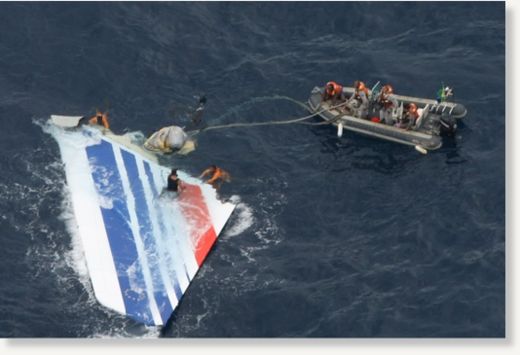
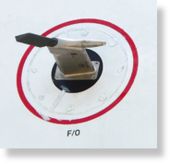
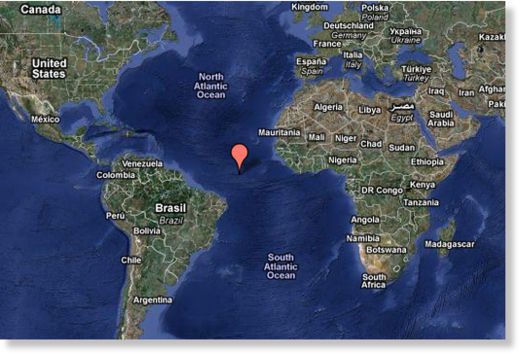
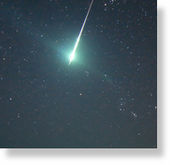

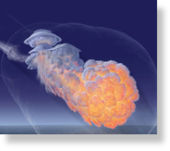
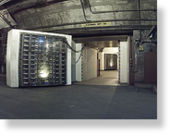



No one seems to know when the policy changed. An article in Nature says this:
[Link]
When the policy changed is unclear. The website Space.com reported the end of the relationship on 10 June, but Brown says that he was told at the beginning of this year that there would be no further data releases. Mark Boslough, a physicist at Sandia National Laboratories in Albuquerque, New Mexico, says he was told this spring that he could no longer publicly discuss the classified data to which he had some access. Neither scientist could give a reason for the end of the arrangement, and the United States Air Force, which operates the satellites, did not respond in time for Nature's deadline. The Air Force did issue a 16 March memo on the military classification of fireball data, but Nature could not confirm its contents.